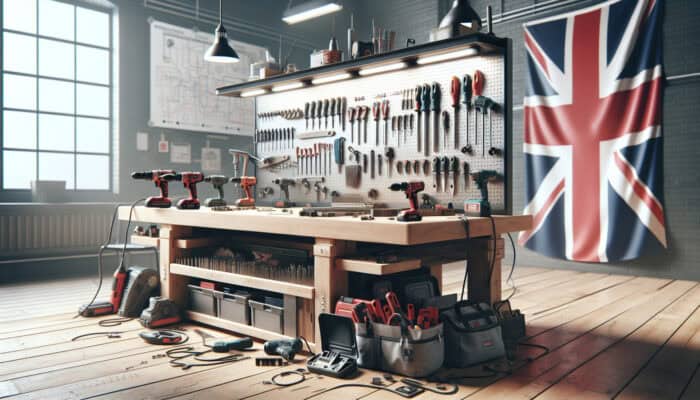Evaluating Your Furniture Requirements for a Functional Home
Thoroughly Assessing Your Living Space

Understanding the precise dimensions and layout of your home is essential when considering beginner furniture tips for house clearance. Before making any furniture purchases, take the time to meticulously measure each room. This will help you determine the available space and identify the ideal dimensions for your new furniture items. It’s also important to consider how you will navigate through your living areas; ensuring there is ample room for comfortable movement around your furniture is key to creating a welcoming environment.
Use a tape measure to accurately assess both the width and length of every room. Pay particular attention to any architectural features, such as radiators, windows, or doorways, as these elements may influence your furniture arrangement. To better visualise the space, consider sketching a detailed floor plan or employing room design software. This approach will not only help you understand the size of furniture that can fit but also how to arrange it for maximum functionality and visual appeal.
In metropolitan areas like London or Manchester, where available space can be at a premium, this evaluation becomes even more critical. A large sofa in a compact flat can create a cramped atmosphere rather than a cosy one. By conducting a thorough space assessment, you can avoid expensive errors and ensure that your home remains both stylish and practical.
Prioritising Core Furniture Pieces for Your Home
When furnishing your home, identifying and prioritising essential pieces is crucial for establishing a functional and comfortable living space. Begin by pinpointing the key furniture items that will meet your immediate needs. Typically, these include a bed, sofa, dining table, and potentially a workspace if you are working from home. These essential elements will lay the foundation for your living environment and guide your subsequent decorative decisions.
Reflect on how you intend to utilise each room. For instance, if your living room serves as a space for relaxation and social gatherings, a comfortable sofa paired with a suitably sized coffee table should be among your top priorities. In bedrooms, investing in a high-quality bed with adequate storage solutions can enhance your living space while ensuring restful sleep. The dining area should feature a table that can accommodate the regular number of guests you expect to entertain.
Moreover, consider the versatility of the furniture you choose. Items that serve multiple functions can be invaluable in smaller living spaces. For example, a sofa bed is an excellent option for hosting guests without requiring a separate guest room. This not only saves space but also optimises the overall functionality of your home. By focusing on these core furniture pieces, you can cultivate a cohesive living environment that aligns with your lifestyle needs.
Anticipating Future Furniture Requirements
Life’s unpredictability means that your furniture needs may shift as your circumstances evolve. When applying beginner furniture tips for house clearance, it’s wise to consider potential life changes that could impact your furniture requirements. This might include expanding your family, shifting careers, or significant lifestyle changes such as moving to a new location or downsizing.
Take a moment to reflect on your current lifestyle and envision how it might change in the coming years. If you anticipate a family expansion, investing in durable, timeless furniture that can adapt to various needs is advisable. For instance, a robust dining table can host family gatherings today and later double as a workspace for children as they grow.
Additionally, consider whether you may need to accommodate guests more often or if your social circle might expand. Selecting furniture pieces that are both practical and adaptable can help ease these transitions. Opt for modular furniture or items with built-in storage solutions that can readily adjust to your evolving requirements. By planning for future needs, you can save time and resources while designing a home that adapts effortlessly alongside your lifestyle.
Understanding Your Style Preferences for Furniture

Your home should reflect your unique personality, and the furniture style you choose should encapsulate your personal aesthetic. As you delve into beginner furniture tips for house clearance, take the time to evaluate your style preferences. Are you inclined towards a modern, minimalist design, or do you prefer a more traditional or eclectic approach? Recognising your aesthetic can significantly influence your purchasing decisions, ensuring that your home exudes a cohesive atmosphere that feels authentically yours.
Start by collecting inspiration from diverse sources—magazines, online platforms such as Pinterest, or visits to local furniture outlets. Take note of the colours, materials, and designs that resonate with you the most. Creating a mood board can help you visualise how different styles can harmoniously coexist in your space. This exercise can clarify your preferences while helping you avoid impulsive purchases that may clash with your overall vision.
Moreover, it’s crucial to consider how different styles can work together. Mixing modern and vintage pieces can create a striking contrast, but it requires careful balance. If you prefer an eclectic mix, ensure that there are common elements, such as colour or material, that connect the various components. Ultimately, your furniture should align with your taste and contribute to a warm and inviting atmosphere in your home.
Establishing a Realistic Furniture Budget
Creating a practical budget is a vital stage in the process of acquiring furniture, particularly for beginners navigating the realm of home décor. As you embark on your journey with beginner furniture tips for house clearance, it’s important to consider how much you can afford to spend without jeopardising your financial stability. A well-structured budget will empower you to make informed decisions about which pieces to prioritise and identify areas where compromises may be necessary.
Start by determining your overall budget and breaking it down into specific categories based on essential furniture pieces. For instance, you might allocate a larger portion of your budget for a high-quality bed while setting aside less for decorative items. Research prices online or visit local retailers to gain insights into market trends. Remember that investing in well-made items can save you money in the long run, as quality furniture typically requires fewer replacements over time.
Additionally, explore creative budgeting options, such as shopping at thrift stores or taking advantage of sales and discounts. Numerous retailers offer seasonal promotions or clearance events where you can find high-quality furniture at reduced prices. Don’t forget to include delivery and assembly costs in your budget, as these can significantly affect your overall expenses. By crafting a thoughtful budget, you can make confident choices that maximise your investment while creating a beautiful and functional home.
Selecting the Ideal Furniture for Your Home
Balancing Quality and Cost in Furniture Selection

Finding the right equilibrium between quality and cost is essential when choosing furniture. As a beginner exploring beginner furniture tips for house clearance, understanding the significance of durability versus expense can greatly influence your long-term satisfaction with your purchases. While high-quality furniture may come with a higher price point, it often provides enhanced longevity and performance, making it a worthwhile investment.
Conduct comprehensive research into the materials and craftsmanship of potential purchases. For example, solid wood furniture generally outlasts its particleboard counterparts. Look for items that come with warranties or guarantees, as these often signify a manufacturer’s confidence in their product’s quality. By prioritising well-constructed pieces, you are more likely to invest in items that will endure over time, rather than needing frequent replacements.
Consider the total cost of ownership, beyond just the initial purchase price. While cheaper options may seem appealing, they often do not perform as well or last as long, resulting in higher costs over time. Also, remember that furniture is a long-term investment; consider how frequently you will use each piece and how crucial its quality is to your lifestyle. By emphasising quality, you can create a home that reflects your values and meets your functional requirements for years to come.
Finding the Right Balance Between Style and Comfort
When selecting furniture, the relationship between style and comfort should never be overlooked. While aesthetic appeal is undoubtedly significant, your furniture must also fulfil its practical role. As you implement beginner furniture tips for house clearance, prioritise pieces that are comfortable for daily use, ensuring you cultivate a welcoming environment for both yourself and your guests.
When testing sofas, chairs, or beds, take the time to sit or lie down on them to evaluate their comfort levels. What may appear visually stunning might not be suitable for prolonged use. Consider factors such as seat depth, cushion firmness, and material texture. Opting for high-quality upholstery can greatly enhance comfort, making it essential to touch and feel the fabrics before making a purchase.
Moreover, take into account the layout of your space and how various pieces interact with one another. For example, a beautifully designed coffee table may lose its appeal if it is placed too far from the seating area or obstructs the flow of movement in the room. Your furniture should enhance both the style and comfort of your living space, creating an inviting atmosphere where you can unwind and entertain. By blending these two essential elements, you can achieve a harmonious balance that elevates your home’s overall aesthetic.
Exploring Eco-Friendly Furniture Choices
As environmental concerns increasingly influence consumer behaviour, opting for eco-friendly furniture solutions has become essential. When considering beginner furniture tips for house clearance, explore sustainable materials and practices that can minimise your environmental impact. This choice not only benefits the planet but often results in unique, stylish pieces that enhance your home.
Look for furniture crafted from sustainably sourced materials, such as reclaimed wood, bamboo, or recycled metal. These materials typically have a lower environmental footprint compared to traditional alternatives. Additionally, many manufacturers now prioritise eco-friendly practices in their production processes, ensuring reduced emissions and minimal waste. Research brands that align with your values, and consider supporting local artisans who create furniture using sustainable methods.
Furthermore, contemplate the longevity of the furniture you select. Investing in high-quality, durable items will decrease the need for replacements, ultimately resulting in less waste. When it’s time to part with old furniture, explore recycling or donation options to ensure it is repurposed rather than ending up in a landfill. By prioritising eco-friendly choices, you can furnish your home in a way that reflects your values while creating a stylish, sustainable sanctuary.
Preparing for a Successful House Clearance
Systematically Sorting Your Household Items
The initial step in preparing for a house clearance involves efficiently sorting through your items. This vital process enables you to make informed decisions about what to keep, sell, or donate, forming a significant aspect of implementing beginner furniture tips for house clearance. Start by evaluating each room in your home and categorising your belongings into three main groups: keep, sell, and donate.
Adopt a systematic approach by focusing on one room at a time. As you assess items, reflect on their condition, utility, and emotional significance. If an item no longer serves a practical purpose or brings you joy, it may be time to let it go. For instance, outdated furniture that no longer fits your style or needs can consume valuable space better utilised by more functional pieces.
Additionally, keep in mind that local charities often appreciate donations of gently used furniture and household items. This not only supports those in need but also highlights your efforts to declutter your home responsibly. Incorporate a timeline for the sorting process to avoid feeling overwhelmed, aiming to complete each room before moving on to the next. By adhering to these guidelines, you can foster a more organised living space while setting the stage for a successful house clearance.
Strategically Planning Your House Clearance
Once you have sorted your items, the subsequent step in preparing for house clearance is to devise a strategic plan. An organised plan can facilitate a smooth and efficient process as you progress with your beginner furniture tips for house clearance. Start by evaluating how much time you will need to complete the clearance and assign dedicated days for the task.
Consider the logistics of moving larger items. Measure doorways, staircases, and any potential obstacles to avoid complications on the day of the clearance. You may need to enlist help from friends or hire a professional service, particularly for bulky or awkwardly shaped furniture. Establish a clear timeline for when you anticipate completing the clearance, factoring in time needed for selling or donating furniture.
Additionally, make arrangements for transporting any items you plan to sell or donate. Research local charities or organisations that accept furniture donations, and schedule pickups if they provide that service. By creating a detailed plan, you can remain organised and focused, ultimately simplifying the process and making your house clearance more manageable.
Prioritising Safety Measures During Clearance
Safety should always be a primary concern during your house clearance. When handling heavy items, it’s essential to employ proper lifting techniques and wear protective gear to avoid injuries. As you incorporate beginner furniture tips for house clearance, keep in mind that your safety is paramount, especially when dealing with large furniture pieces.
Start by donning appropriate clothing, such as sturdy shoes and gloves, to safeguard yourself throughout the clearance process. When lifting heavy items, bend at your knees and keep your back straight. This technique aids in distributing weight evenly, thereby reducing the risk of injury. If you are uncertain about lifting heavy pieces on your own, do not hesitate to ask for help or hire professional movers to assist you.
Moreover, decluttering can often introduce unforeseen hazards, such as tripping over loose items or navigating cramped spaces. Ensure that pathways are clear and avoid attempting to carry too many items simultaneously. By prioritising safety measures, you can protect yourself while executing your house clearance efficiently and effectively.
Successfully Selling Unwanted Furniture
Leveraging Online Marketplaces for Sales
Utilising online marketplaces provides an excellent opportunity to reach a broad audience when selling unwanted furniture. As you embark on your journey with beginner furniture tips for house clearance, platforms like eBay and Gumtree offer convenient and accessible avenues for connecting with potential buyers. These platforms enable you to showcase your furniture while reaching interested parties in your vicinity, maximising your chances of making a sale.
When listing your items, take time to create engaging descriptions and include high-quality images. Emphasise the features that make your furniture appealing, such as unique designs, comfort, or durability. Provide accurate dimensions and details about the item’s condition to set realistic expectations for potential buyers.
Pricing is another critical factor to consider. Research similar items to gauge what other sellers are asking for comparable furniture. This will help you establish competitive pricing that attracts buyers without undervaluing your items. Be prepared to negotiate, as many buyers anticipate some degree of haggling. By effectively leveraging online marketplaces, you can successfully sell your unwanted furniture and create a more organised living space.
Utilising Local Classifieds for Quick Sales
In addition to online marketplaces, local classifieds offer an effective route for selling unwanted furniture. Advertisements in local newspapers or community boards can target specific customers within your area, facilitating quicker sales. This strategy is particularly advantageous when considering the logistics of transporting larger items.
Craft clear, concise advertisements that include essential information about your furniture, such as dimensions, condition, and asking prices. Photos are also crucial; provide clear images that capture the item from multiple angles, allowing potential buyers to assess its suitability.
Consider including your location in the advertisement to attract local buyers. This not only reduces transportation costs for both parties but also enhances the likelihood of a sale. Additionally, local classifieds often foster a sense of community, enabling you to connect with buyers in your area. By leveraging local advertising, you can tap into a targeted market while simplifying the selling process.
Implementing Effective Pricing Strategies
Establishing effective pricing strategies is vital when selling unwanted furniture. Numerous factors can influence the price you set, making research and market awareness essential components of your strategy aligned with beginner furniture tips for house clearance. Start by investigating similar items across various platforms to understand the current market rates for your furniture.
Consider the condition of your items—furniture in excellent condition can command a higher price, while well-used pieces may require a more competitive approach. Additionally, factor in the original price, age, and any unique features that may enhance its value.
Offering bundled deals can also be an effective strategy; this gives buyers the perception of receiving a good deal while helping you clear multiple items at once. Be open to negotiation; many buyers expect to haggle, so be prepared to adjust your prices accordingly. By employing these pricing strategies, you can effectively attract buyers while maximising the return on your unwanted furniture.
Exploring Furniture Donation Options for a Good Cause
Donating unwanted furniture provides a meaningful way to support your community while decluttering your home. Many charities and organisations accept furniture donations, giving your items a second chance and assisting those in need. As you consider beginner furniture tips for house clearance, explore various donation options available to you.
Organisations such as the British Heart Foundation and the Salvation Army often accept furniture donations, with some offering free collection services. Contact them to learn about their specific requirements and collection procedures. Donating to local shelters or community centres can also be impactful; these organisations often struggle to furnish their spaces adequately.
Moreover, donating your furniture may entitle you to tax benefits, providing an added incentive to part with items you no longer need. By choosing to donate, you can positively contribute to your community while simplifying your house clearance process.
Facilitating Furniture Donations Effectively
Connecting with Charitable Organisations
When considering furniture donations, charitable organisations play a crucial role in facilitating the process. Donating to a charity, such as the British Heart Foundation or the Salvation Army, not only aids those in need but also aligns with the essence of beginner furniture tips for house clearance. These organisations often welcome gently used furniture, providing essential support for families striving to make their homes more comfortable.
Before donating, check the specific requirements of each charity, as they may have guidelines on the types of furniture they accept. Many organisations offer collection services, simplifying the donation process for you. This allows you to declutter your home without the burden of transportation.
In addition to providing vital assistance to those in need, donating your furniture can foster positive community relationships. It promotes goodwill and encourages a culture of giving, inspiring others to consider similar actions. By choosing to donate, you can make a tangible difference in the lives of others while streamlining your house clearance.
Supporting Local Community Centres with Donations
Local community centres often find themselves in need of furniture donations, making them a worthy destination for your unwanted items. As you embark on your journey with beginner furniture tips for house clearance, consider supporting these centres, which frequently provide crucial services to the community.
Community centres may require furniture for various purposes, including educational programmes, after-school activities, and social events. Donating furnishings such as tables, chairs, or even decorative items can significantly enhance their offerings and create a welcoming environment for attendees.
Before donating, contact your local community centre to ascertain their specific needs and any guidelines they may have regarding donations. You might discover they have a wishlist of items they require, which can streamline the donation process. By supporting local community centres with your unwanted furniture, you contribute to creating positive, uplifting spaces for your community and make a lasting impact while decluttering your home.
Participating in Furniture Recycling Initiatives
Engaging in furniture recycling schemes can significantly reduce waste while providing a sustainable solution for your unwanted items. With rising awareness surrounding environmental issues, recycling initiatives are an excellent complement to your beginner furniture tips for house clearance. These programmes aim to repurpose old furniture, giving items a new lease of life rather than allowing them to languish in landfills.
Many local councils and organisations run recycling programmes that accept various types of furniture. They can disassemble, refurbish, or upcycle your unwanted items, ensuring they are reused effectively. This not only helps mitigate environmental impact but also supports local economies and charities.
To locate recycling schemes in your area, consult your local council or search online for initiatives within your community. By participating in these programmes, you contribute to a more sustainable future while efficiently decluttering your home. Make a conscious effort to recycle your furniture, ensuring it finds a new purpose rather than being discarded.
Contributing to Local Schools and Universities
Donating furniture to local schools and universities represents a fantastic way to support educational institutions while implementing beginner furniture tips for house clearance. Many schools and universities frequently lack adequate furnishings for classrooms, libraries, and communal areas, making your unwanted items a valuable resource.
Consider reaching out to local educational institutions to inquire about their furniture donation requirements. Items such as desks, chairs, and tables can significantly enhance their learning environments. Additionally, schools or universities may have programmes that focus on sustainability and community support, further encouraging the donation of furniture.
When donating to educational institutions, try to provide items in good condition to ensure they are functional for both students and staff. By supporting local schools and universities, you contribute to nurturing future generations while simplifying your house clearance process.
Donating to Religious Institutions for Community Support
Religious institutions, including churches, mosques, synagogues, and other centres, often require furniture for community use and events. Donating to these organisations can be a fulfilling way to implement beginner furniture tips for house clearance, while also supporting your local faith community.
Many religious centres organise events, support groups, and community outreach programmes, often necessitating suitable furniture for gatherings. Consider contacting your local religious institutions to inquire about their furniture needs and donation guidelines.
When donating, ensure that items are in good condition and suitable for communal use. By donating to religious institutions, you foster a sense of community and support initiatives that benefit those in need. This not only aids in clearing your home but also strengthens community ties and enhances the social fabric of your area.
Responsible Disposal of Unusable Furniture
Utilising Council Collection Services for Disposal
When faced with unusable furniture, local council collection services offer a convenient solution for disposal. Many councils provide bulky waste collection services, allowing you to arrange for the collection of larger items that cannot be disposed of through regular rubbish collection. This option is particularly useful when implementing beginner furniture tips for house clearance, ensuring that your unwanted furnishings are managed responsibly.
Before scheduling a collection, check with your local council for any specific requirements, such as advance notice or limits on the number of items collected. Some councils may also charge a small fee for this service, so be sure to budget accordingly.
Utilising council collection services not only simplifies the disposal process but also aligns with responsible waste management practices. By ensuring that your unusable furniture is collected properly, you can do your part to minimise landfill waste and promote environmentally-friendly disposal methods.
Engaging Professional Disposal Services
If you prefer a more hands-off approach to disposing of unusable furniture, hiring professional disposal services can provide a convenient solution. These services specialise in furniture disposal and offer efficient solutions for decluttering your space while adhering to environmental regulations.
When selecting a professional disposal service, consider their reputation and commitment to eco-friendly practices. Look for companies that guarantee responsible disposal methods, such as recycling or donating items whenever feasible. Many reputable services will provide you with a clear outline of their processes, giving you peace of mind regarding the disposal of your unwanted furniture.
While hiring professional disposal services may incur costs, the convenience and efficiency they offer can save you time and alleviate stress during your clearance process. As you progress with your beginner furniture tips for house clearance, ensure you choose a service that aligns with your values and meets your disposal requirements.
Embracing Environmentally Friendly Disposal Methods
Disposing of furniture in an environmentally responsible manner has become increasingly important as awareness surrounding sustainability continues to grow. When faced with unusable items, consider exploring eco-friendly disposal options that align with your values, particularly in relation to beginner furniture tips for house clearance.
Seek out local recycling facilities that accept furniture, as this can help divert waste from landfills and promote responsible disposal practices. Many councils and organisations offer recycling programmes for wood, metal, and fabric, ensuring materials are repurposed for new products.
Furthermore, research eco-conscious disposal services that prioritise recycling and sustainability in their processes. These options often provide greener alternatives while helping you manage your unwanted furniture responsibly. By embracing environmentally friendly disposal methods, you contribute to a more sustainable future while enhancing the efficiency of your house clearance.
Exploring Donation and Reuse Options for Unusable Furniture
Investigating donation and reuse options is an impactful way to manage unusable furniture while positively contributing to your community. Many charities and organisations accept furniture donations, ensuring that your items find new homes instead of being discarded in landfills. This approach aligns seamlessly with beginner furniture tips for house clearance.
Research local charities, shelters, and community organisations that accept furniture donations. Items that may not be suitable for resale can still serve valuable purposes for local initiatives, providing essential resources for those in need. Numerous charitable organisations are equipped to handle pick-ups, simplifying the donation process for you.
Additionally, consider upcycling or repurposing unusable furniture items. Transforming old pieces into new creations can breathe fresh life into them while reducing waste. By opting for donation and reuse options, you can make a meaningful impact on your community while effectively managing your house clearance.
Successfully Moving New Furniture Into Your Home
Strategically Planning Your Furniture Layout
Once you’ve made your furniture purchases, the next step involves planning the layout for your new items. Properly arranging your furniture is a crucial aspect of creating a harmonious living environment, especially when applying beginner furniture tips for house clearance. A well-thought-out layout can enhance both functionality and aesthetics, making your space feel more inviting.
Start by sketching a rough floor plan that incorporates the dimensions of your new furniture. Visualise how each piece will fit into the available space while considering factors such as traffic flow and accessibility. Avoid overcrowding by ensuring there is sufficient room between furniture items for movement.
Utilise tools such as online room planners or apps to visualise your layout with greater precision. As you arrange your furniture, remember to consider focal points, such as windows or fireplaces, and how your layout can highlight these features. By thoughtfully planning the layout, you create a functional and aesthetically pleasing environment that reflects your personal style.
Carefully Assembling Your New Furniture
When moving new furniture into your home, proper assembly plays a significant role in achieving a polished look. As you tackle this step in your journey with beginner furniture tips for house clearance, follow the manufacturer’s instructions meticulously to ensure your furniture is assembled correctly and safely.
Before commencing the assembly process, ensure you have all the necessary tools and components on hand. Familiarise yourself with the instructions and take your time during assembly to avoid mistakes. Rushing through the process can lead to errors, which may result in damage or unsafe furniture.
If you encounter difficulties during assembly, consider seeking assistance from friends or family members. Alternatively, many retailers offer assembly services for an additional fee, allowing you to guarantee that your furniture is properly assembled without the stress. By prioritising proper assembly, you can enjoy your new furniture and ensure it functions effectively.
Protecting Your Floors During the Moving Process
As you bring new furniture into your home, safeguarding your floors should be a top priority. The last thing you want is to damage your flooring while rearranging your new pieces, so consider strategies that will protect your surfaces. Incorporating protective measures aligns seamlessly with beginner furniture tips for house clearance and enhances the longevity of your flooring.
Utilise felt pads or furniture coasters underneath the legs of your furniture to prevent scratches and dents on wooden or laminate floors. These simple additions can be highly effective in maintaining your flooring while allowing for easy movement of furniture when necessary. Additionally, consider placing rugs in high-traffic areas to provide an extra layer of protection.
Implementing these protective measures not only safeguards your floors but also enhances the overall aesthetic of your space. As you navigate the process of moving new furniture in, take the time to ensure that your environment remains intact while you create your ideal living space.
Maintaining Your New Furniture for Longevity
Establishing a Regular Cleaning Routine
Maintaining your new furniture requires a consistent cleaning routine to ensure it remains in optimal condition. As you incorporate beginner furniture tips for house clearance, establishing a cleaning schedule will help you preserve the beauty and functionality of your pieces while extending their lifespan.
Begin by identifying the appropriate cleaning products and techniques for each type of material in your furniture. For instance, wood can benefit from specific wood cleaners, while upholstery may require gentle fabric cleaners. Always refer to manufacturer guidelines for specific care recommendations.
Integrate regular dusting and vacuuming into your routine to eliminate allergens and dirt that may accumulate over time. For wooden surfaces, consider polishing periodically to maintain their shine. By prioritising regular cleaning, you can keep your furniture looking its best and create a healthy living environment.
Taking Preventive Measures Against Damage
Implementing preventive strategies to safeguard your furniture is essential for maintaining its longevity. When applying beginner furniture tips for house clearance, consider approaches to avoid damage caused by environmental factors or everyday use.
One crucial factor to consider is the placement of your furniture. Avoid positioning items in direct sunlight, as this can lead to fading and deterioration over time. Similarly, keep furniture away from heating sources to prevent warping or cracking.
Encourage responsible use by educating family members and guests on how to treat your furnishings with care. Simple rules, such as avoiding placing hot items directly on surfaces and using coasters for drinks, can significantly contribute to the longevity of your furniture. By emphasising preventive measures, you can enjoy your pieces for many years to come.
Proactively Repairing Minor Issues
Addressing minor issues promptly is a key aspect of effectively maintaining your new furniture. When implementing beginner furniture tips for house clearance, remain vigilant about identifying any signs of wear or damage. Early intervention can prevent larger problems down the line, ensuring your furniture stays in excellent condition.
Small scratches on wood surfaces can often be remedied with specialised repair kits designed for furniture. Fabric upholstery may benefit from spot cleaning or the use of fabric-safe repair solutions. For more significant issues, don’t hesitate to consult professional repair services to ensure the longevity of your furnishings.
Make addressing minor repairs a part of your regular maintenance routine. By being proactive and attentive to small issues, you can preserve the beauty and functionality of your furniture, ensuring it serves you well for years to come.
Frequently Asked Questions About Furniture Management
What are the first steps in evaluating my furniture needs?
Begin by assessing your available space, identifying essential pieces, contemplating future needs, and determining your style preferences. This foundational work will effectively guide your furniture selections.
How can I choose furniture that fits my space appropriately?
Measure your rooms and plan the layout to identify furniture sizes that will accommodate the flow of your living space comfortably.
What should I do with furniture I no longer require?
Consider sorting your items into categories: keep, sell, and donate. This will help you determine the best course of action for your unwanted furniture.
Where can I sell furniture that I no longer want?
Utilise online marketplaces like eBay and Gumtree, or advertise in local classifieds. Both platforms can connect you with potential buyers in your area.
How can I donate furniture responsibly?
Research local charities or community centres that accept furniture donations. Ensure your items are in good condition to benefit those in need.
What safety measures should I implement during a house clearance?
Utilise proper lifting techniques, wear protective gear, and ensure that pathways are clear to avoid accidents while moving heavy items.
Are there eco-friendly methods for disposing of furniture?
Explore recycling schemes in your local area and consider collaborating with disposal services that prioritise sustainable practices.
How can I protect my floors when moving furniture?
Use felt pads or furniture coasters beneath the legs of your furniture to prevent scratches and consider using rugs in high-traffic areas.
What maintenance is necessary for new furniture?
Regular cleaning, prevention from direct sunlight, and timely repairs of minor issues are essential for maintaining the quality and longevity of your furniture.
How do I plan the layout for my new furniture effectively?
Sketch a floor plan, consider the dimensions of each piece, and visualise how they will fit within the available space, taking flow and functionality into account.






